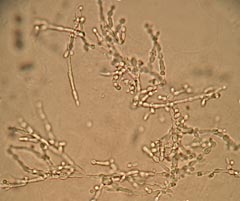Conditions We Treat
Candida Vaginitis
The fungus Candida resides in the body usually without causing symptoms. A yeast infection occurs, however, when there is an overgrowth of Candida. A number of factors make a woman susceptible to such infections:
- diabetes
- pregnancy
- weakened immune system due to HIV or medications
- genetic predisposition
- antibiotics
- hormonal contraceptives, such as the pill, patch, and vaginal ring
- contraceptive devices, such as the sponge, diaphragm, and IUD
- sexual activity
- douching
Symptoms of a yeast infection occur within the vagina and in the tissues surrounding the vaginal opening. They include:
- itching
- irritation
- redness
- swelling
- soreness
- cracked skin
- pain during sex or urination
- a typically odorless, white, clumpy discharge that looks like cottage cheese, but the discharge may also be watery or not present at all
It is estimated that 75% of all women experience at least one episode of symptomatic infection during their lifetime, and that 40-45% have two or more episodes.
A yeast infection, which is variously known as a vaginal yeast infection, yeast vaginitis, and vaginal candidiasis, causes about 1/3 of all cases of vaginitis. This diagnosis, however, is made far more often than warranted. Since the symptoms of bacterial vaginosis (BV), trichomoniasis, and dermatitis overlap with those of a yeast infection, 50 percent of women diagnosed with a yeast infection actually have another condition. Self-diagnosis is especially unreliable.
An accurate diagnosis is based on a pelvic exam plus laboratory testing. During the physical exam, the vaginitis specialist examines the vagina and surrounding tissue (the vulva), and also collects vaginal secretions, which are viewed under a microscope to detect the presence of yeast. In order to exclude other possible causes, vaginal secretions are also cultured and put through polymerase chain reaction (PCR) analysis.
Candida vaginitis is treated with an anti-yeast medication, which a woman takes in pill form or as a vaginal cream. Symptoms start diminishing after a few days of treatment. If untreated, symptoms will persist.
Approximately 5-8% of women suffer from recurrent or chronic yeast infections. This diagnosis is given if she has four or more confirmed infections in a twelve month period. As such, it is very important to make the correct diagnosis with each symptomatic episode. It is unclear if these repetitive infections are due to a relapse from persistent vaginal yeast, or from a reinfection. Genetic susceptibility is likely the biggest risk factor for recurrent Candida vaginitis.
Most yeast infections occur without any identifiable reason, but for certain groups of women, preventive measures are recommended. Women with diabetes can reduce their susceptibility by controlling blood glucose. Women who have been put on antibiotics for some other condition can take a dose of fluconazole at the beginning and end of their course of medication. Women with recurrent yeast infections may benefit from avoiding exposure to increased estrogen and the use of inserted contraceptive devices, such as the sponge, diaphragm and the IUD.

